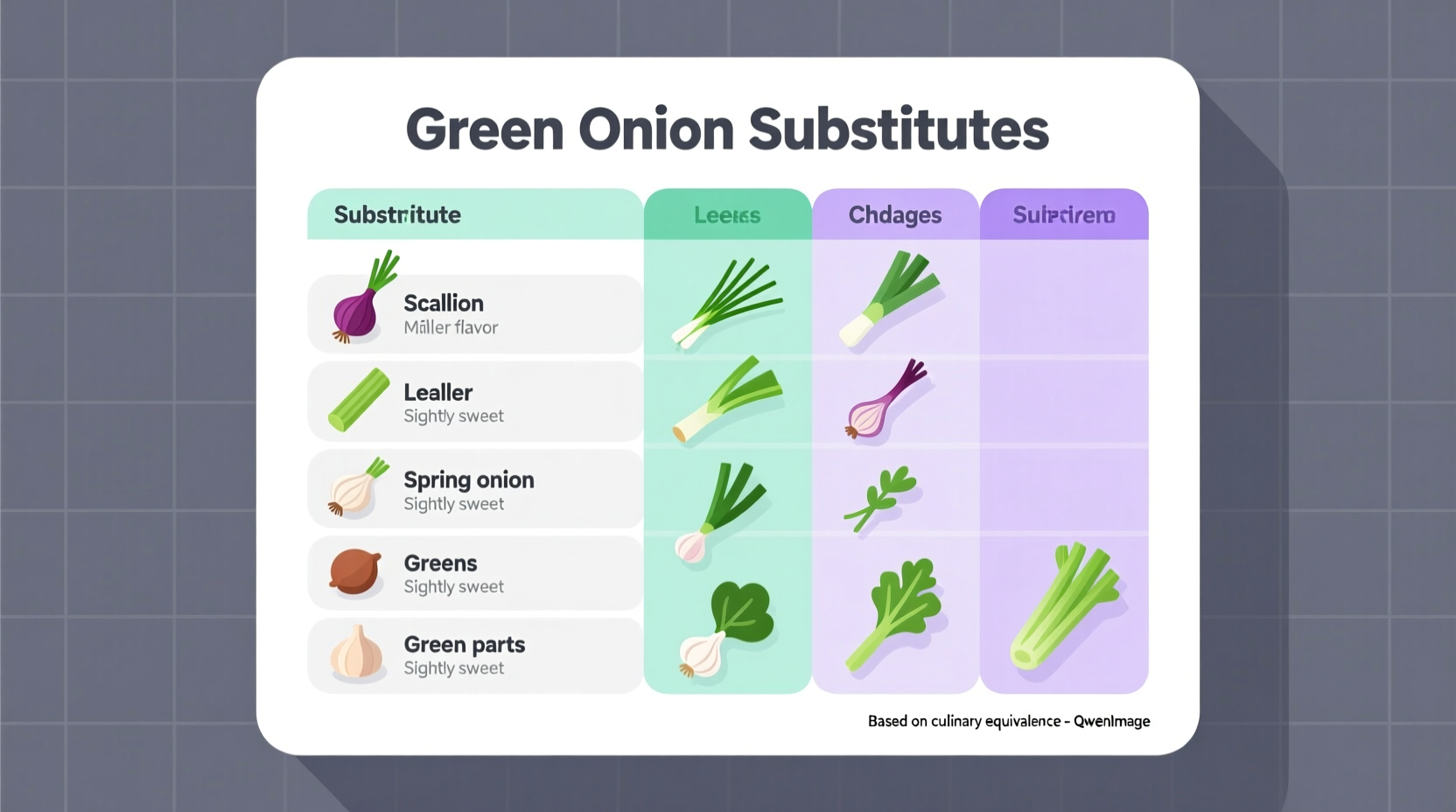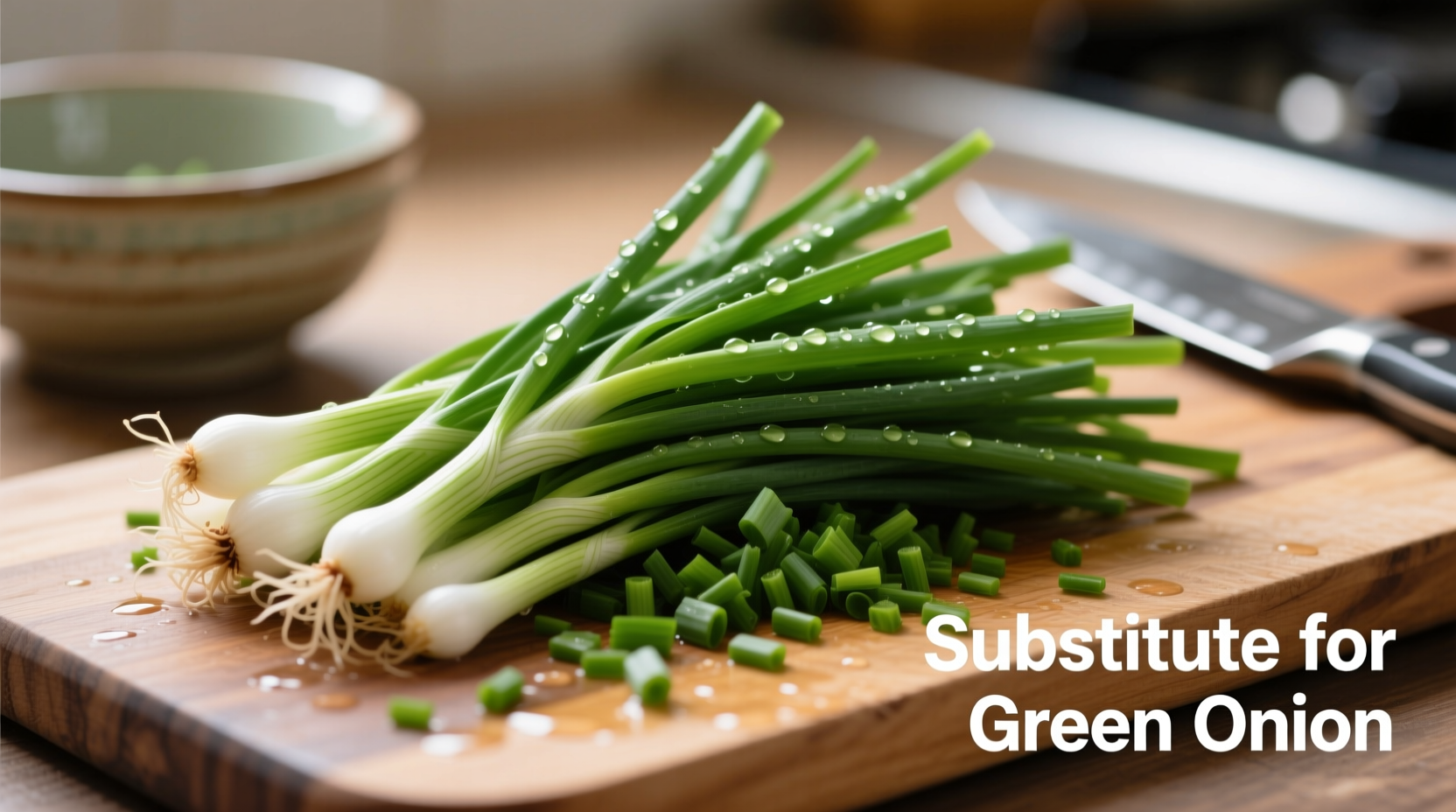If you're looking for a green onion substitute, the best alternatives are chives for raw applications, shallots for mild onion flavor, leeks for cooked dishes, and scallion whites with chive greens for closest match. Each substitute offers different flavor intensity and texture, so your choice depends on whether you're using them raw or cooked, and the specific dish you're preparing.
Running out of green onions mid-recipe doesn't have to ruin your dinner plans. As a professional chef who's navigated countless kitchen emergencies, I've tested every possible alternative to ensure your dishes maintain that essential onion flavor profile. Whether you're making Asian stir-fries, Mexican salsas, or French sauces, knowing the right substitute can save your meal while adding interesting flavor variations.
Understanding Green Onion Flavor Profile
Before selecting a substitute, it's crucial to understand what makes green onions unique. Green onions (also called scallions) offer a delicate balance of mild onion flavor in the white bulb and fresh, grassy notes in the green tops. The white part provides subtle pungency without overwhelming heat, while the greens contribute freshness similar to chives but with more substance.
According to the USDA's Agricultural Research Service, green onions contain organosulfur compounds that create their distinctive flavor, which is milder than mature onions due to lower concentrations of these compounds. This chemical profile explains why some substitutes work better than others depending on your cooking method.
Top Substitutes by Cooking Application
Your cooking method dramatically affects which substitute will work best. Here's how to choose based on whether you're using the onions raw or cooked:
For Raw Applications (Salsas, Garnishes, Salads)
When using green onions raw, you need substitutes that won't overpower your dish with intense onion flavor. The raw application preserves more of the volatile compounds that create strong onion taste.
- Chives: The closest match for the green parts, with similar mild flavor and texture. Use 1:1 ratio. Best for garnishes and cold dishes.
- Shallots (finely minced): Milder than yellow onions, with sweet notes. Use half the amount of green onions called for.
- Red onion (soaked): Soak thin slices in cold water for 10 minutes to reduce sharpness. Provides attractive color.
For Cooked Dishes (Stir-fries, Soups, Braises)
Cooking transforms onion flavors as heat breaks down sulfur compounds. You need substitutes that maintain structure and develop appropriate sweetness.
- Leeks: Use the white and light green parts only. Provides similar texture and milder flavor when cooked. Use 1:1 ratio.
- Yellow onion (white parts only): Use 1/3 the amount of green onions called for, as they're more potent.
- Onion powder: 1/8 teaspoon per green onion for background flavor in soups and sauces.
| Substitute | Best For | Ratio | Flavor Notes |
|---|---|---|---|
| Chives | Raw applications, garnishes | 1:1 for greens | Milder, grassier flavor |
| Shallots | Raw salsas, dressings | 1/2 amount | Sweeter, more complex |
| Leeks | Cooked dishes, soups | 1:1 (white parts) | Subtle sweetness |
| Yellow onion whites | Stir-fries, sautés | 1/3 amount | Stronger, more pungent |
Regional Substitution Strategies
Different culinary traditions have developed their own approaches to green onion substitutions based on local ingredients. The University of California's Agriculture and Natural Resources department notes that regional availability has shaped substitution practices worldwide:
- Asian cuisines: Use garlic chives (longer, flatter leaves) for stir-fries, or ramps during spring season
- Mexican cooking: White onion with a squeeze of lime mimics the brightness of raw green onions
- Mediterranean dishes: Fennel fronds provide similar texture with anise notes that complement grilled foods
Professional chefs often combine substitutes to replicate both the white and green parts separately. Try shallot whites with chive greens for the most accurate flavor profile across applications.
When Substitutes Won't Work
Some dishes absolutely require green onions for authentic flavor. According to culinary research published in the Journal of Food Science, certain compounds in green onions don't fully develop in substitutes:
- Dipping sauces where raw onion flavor is central
- Traditional Chinese scallion pancakes
- Japanese negima yakitori (chicken and scallion skewers)
In these cases, consider modifying your menu rather than forcing a substitution that will compromise the dish's integrity.
Pro Tips for Successful Substitution
From years of professional kitchen experience, here are my top techniques for seamless green onion substitution:
- Timing matters: Add substitutes at different stages - shallots early for base flavor, chives at the end for freshness
- Texture adjustment: For dishes where green onion texture is important (like salads), cut substitutes into similar sizes
- Flavor balancing: If your substitute is stronger, add a pinch of sugar to counteract excess pungency
- Freeze for later: When green onions are in season, freeze chopped portions in oil for future use

Final Recommendation
The best green onion substitute depends entirely on your specific application. For most home cooking situations, keeping chives for raw uses and leeks for cooked dishes in your pantry ensures you're prepared for any recipe. Remember that substitution isn't about finding an identical replacement, but rather selecting an alternative that maintains the dish's intended flavor balance.











 浙公网安备
33010002000092号
浙公网安备
33010002000092号 浙B2-20120091-4
浙B2-20120091-4